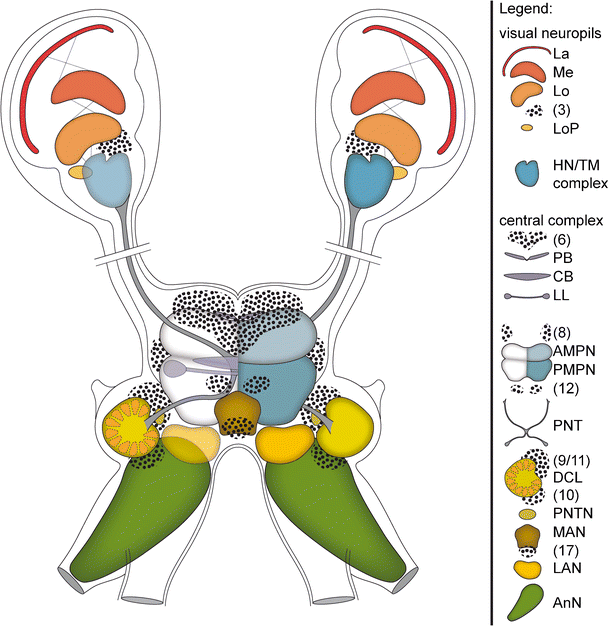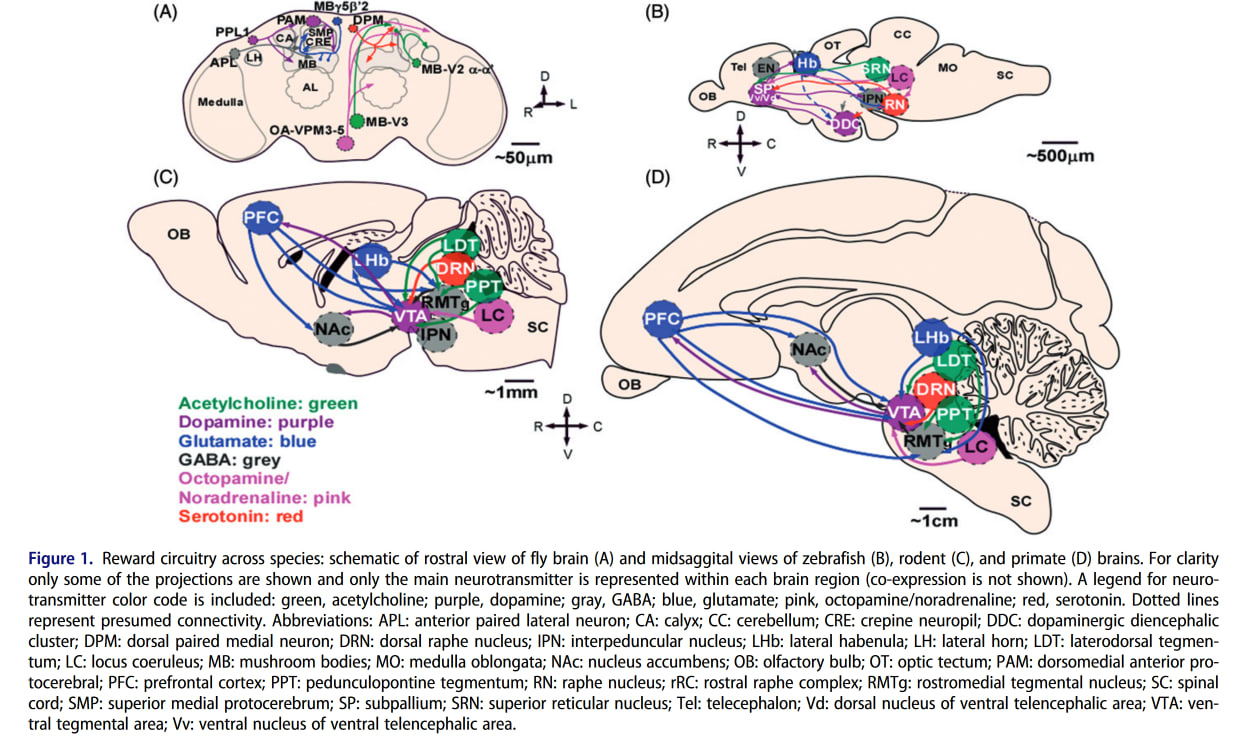This is intended to be an informational post to discuss the neuroanatomy of shrimp, and the implications thereof for the range of computational functions supported by this anatomy.
I believe this topic is of importance to evaluating whether shrimp have moral value.

This is a schematic representation of the brain of the Pacific White Shrimp from this paper:
The accompanying caption:
Schematic representation of the brain of P. vannamei from a ventral view. AMPN anterior median protocerebrum, AnN antenna 2 neuropil, CB central body, DCL deutocerebral chemosensory lobe, HN/TM hemiellipsoid body/medulla terminalis complex, La lamina, LAN lateral antenna 1 neuropil, LL lateral lobes, Lo lobula, LoP lobula plate, Me medulla, PB protocerebral bridge, PMPN posterior median protocerebrum, PNT projection neuron tract, PNTN neuropil of the projection neuron tract, numbers indicate cell clusters
The globular areas at the top are the eyes at the ends of the antenna. You can see the schematic indicates that there is omitted distance with paired 'break lines'.
Since the focus of this investigation is moral value, the visual sensory system is probably not relevant, so we should start with examining the details of the area below that. This lower region is called the 'central complex'.
We need to examine what science has been published about each of these structures, to see if we can make accurate functional accounts of this computing system.
If we were instead investigating fruit flies, we'd have an easier time, since the brains of fruit flies are very well known.
Fortunately, there is a great deal in common between the brains of insects and ocean invertebrates. See this article: The brains of shrimps and insects are more alike than we thought
So, a good start would be checking if reasonable matches can be found between the neuroanatomical structures of the shrimp brain and the fruit fly brain. If so, we can proceed with getting an approximation of the moral value of shrimp from forming a conclusion about the moral value of fruit flies.
There's a great resource here with detailed maps of the fruit fly brain: https://www.fruitflybrain.org/#/
Let's just start with a simpler schematic though.
This is a colored 3D view of the structures in question:
https://neurosciencenews.com/files/2014/02/fly-brain-neuropils.jpg
And here's an even simpler diagram from the paper "Reward from bugs to bipeds: a comparative approach to understanding how reward circuits function"

This paper seems like a great starting point for the investigation of fruit fly moral worth, because it draws comparisons between brains of fruit flies, zebrafish, rodents and primates. Being able to draw on this comparative neuroanatomy between various well-understood species gives us a stronger ability to understand what each brain region is doing. Specifically, this paper focuses on the aspects of the reward/aversion system which is common across these species. If positively and negatively valenced experiences were sufficient to demonstrate the moral worth of an entity, then I feel pretty confident we could stop here. Fruit flies, and by extension, shrimp, almost certainly do have valenced experiences.
How much do we know about the functional roles of each of these parts? For fruit flies, the answer is quite a bit! Here's a pop sci summary of an interesting paper on the topic.
Where comparative neuroanatomy gets really interesting though is in looking at what each more complex brain has that the less complex brain lacks. I think that the details of these lacks are where the answers pertinent to the moral worth of an entity lie. In a future post I will explore these differences in detail, and explain where the neuronal structures and their computational functions giving rise to moral worth lie in these brains.
